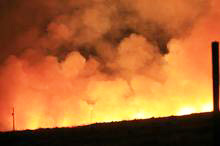Forensic science can be a powerful force in support of justice and public safety. Properly applied, it clears the innocent and helps convict the guilty. The Organization of Scientific Area Committees for Forensic Science (OSAC) is working to strengthen forensic science by facilitating the development of technically sound standards and encouraging their implementation. In recognition of National Forensic Science Week 2019, held September 15-21, OSAC took to LinkedIn and highlighted several standards and guidelines currently on the OSAC Registry or in the registry approval process that will be beneficial for the forensic science community.
Take a look:
Interdisciplinary training & continuing education
 The forensic science disciplines exhibit wide variability regarding techniques, methodologies, research, general acceptability, and education. For example, there are multiple types of practitioners with different levels of education, training and standards for performance. An interdisciplinary standard currently in the OSAC Registry approval process, ASTM E2917-19 standard practice for forensic science practitioner training, continuing education, and professional development programs, outlines minimum training criteria and provides general information, approaches, and resources for all disciplines.
The forensic science disciplines exhibit wide variability regarding techniques, methodologies, research, general acceptability, and education. For example, there are multiple types of practitioners with different levels of education, training and standards for performance. An interdisciplinary standard currently in the OSAC Registry approval process, ASTM E2917-19 standard practice for forensic science practitioner training, continuing education, and professional development programs, outlines minimum training criteria and provides general information, approaches, and resources for all disciplines.
Fire and explosion investigations
 A re-constructive investigation such as a fire or explosion scene, may be subject to independent, subjective and sometimes biased thinking. To help individuals who are charged with the responsibility of investigating and analyzing fire and explosion scenes and rendering opinions as to the origin, cause, or responsibility of such incidents, OSAC’s Fire and explosion investigation subcommittee supported the placement of NFPA 921:2017 guide for fire and explosion investigation on the OSAC Registry.
A re-constructive investigation such as a fire or explosion scene, may be subject to independent, subjective and sometimes biased thinking. To help individuals who are charged with the responsibility of investigating and analyzing fire and explosion scenes and rendering opinions as to the origin, cause, or responsibility of such incidents, OSAC’s Fire and explosion investigation subcommittee supported the placement of NFPA 921:2017 guide for fire and explosion investigation on the OSAC Registry.
DNA mixtures
 Results from DNA mixtures and trace DNA analysis can be ambiguous and difficult to understand, sometimes even for experts. OSAC’s biology/ DNA interpretation and reporting subcommittee, in collaboration with AAFS standard board’s (ASB) DNA consensus body, developed ANSI/ ASB 020, standard for validation studies of DNA mixtures and development and verification of a Laboratory’s mixture interpretation protocol, to provide laboratories with the requirements for designing and evaluating their internal validation studies and interpretation protocols for mixed DNA samples. This ASB published document is currently in the OSAC Registry approval process.
Results from DNA mixtures and trace DNA analysis can be ambiguous and difficult to understand, sometimes even for experts. OSAC’s biology/ DNA interpretation and reporting subcommittee, in collaboration with AAFS standard board’s (ASB) DNA consensus body, developed ANSI/ ASB 020, standard for validation studies of DNA mixtures and development and verification of a Laboratory’s mixture interpretation protocol, to provide laboratories with the requirements for designing and evaluating their internal validation studies and interpretation protocols for mixed DNA samples. This ASB published document is currently in the OSAC Registry approval process.
Drug evidence
 For police and forensic chemists, opening a bag of suspicious powder that might contain fentanyl can be dangerous because of the risk of accidental inhalation. More of the powder becomes airborne than you might think. But cur rently, one has to open the package and scoop out a bit of powder in order to test it. Check out the recent research our colleagues in NIST’s forensic science research group have been doing to help the forensic science community find a safer Credit: Pixabay way to test drug evidence.
For police and forensic chemists, opening a bag of suspicious powder that might contain fentanyl can be dangerous because of the risk of accidental inhalation. More of the powder becomes airborne than you might think. But cur rently, one has to open the package and scoop out a bit of powder in order to test it. Check out the recent research our colleagues in NIST’s forensic science research group have been doing to help the forensic science community find a safer Credit: Pixabay way to test drug evidence.
![]()